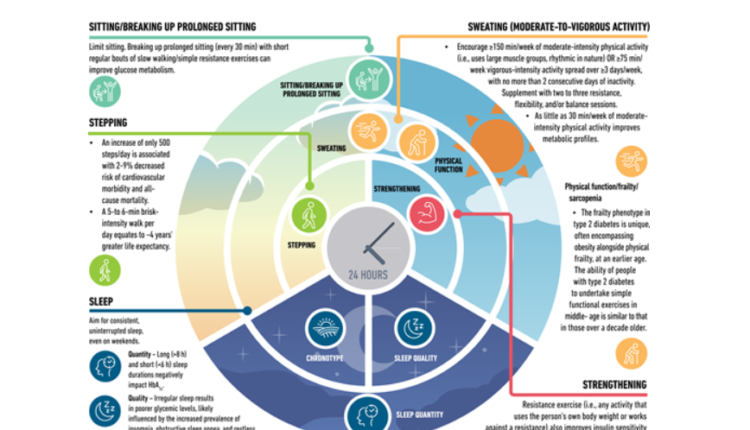There is a conscious push in the world of diabetes care about the fact that language matters. One of the key messages is to recognize that a practitioner is dealing with a “person living with diabetes” and not a “diabetic”. Living with diabetes is probably one of the most complex things to do as it demands lifelong 24/7 attention to achieve desired outcomes.
Diabetes is a chronic, progressive disease characterized by high blood sugar and leads to complications in multiple organs over time. Type 2 diabetes mellitus accounts for over 90% of all diabetes and is the focus of this article. Last year I shared a brief overview of diabetes, and you can review that before you continue.
Diabetes self-management education has been proven to improve outcomes in diabetes as it empowers people living with diabetes to better manage the condition. This confirms the fact that education on diabetes can indeed protect the future.
- Type 2 diabetes mellitus is preventable and within the early years can be forced into remission. Several studies have shown that a weight loss of 5% body weight or more can prevent diabetes in people with prediabetes. Other studies have confirmed that more than two-thirds of people living with diabetes can go into remission with 10% body weight loss. Remission means a return to normal blood glucose without the use of medications over a 3-month period. Unfortunately, these benefits only remain as long as the weight loss is maintained. This amount of weight loss is achievable with aggressive lifestyle changes, medications, or metabolic surgery. Aggressive lifestyle changes work because increased physical activities cause the body to use up more energy, and reducing food intake creates a deficit that can only be replenished by burning stored fats and carbohydrates.
- Many activities of an individual affect the blood sugar control in the body. The image below is from the most recent American Diabetes Association and European Association for the Study of Diabetes (September 2022) consensus on the management of blood sugars. It shows the contributions of simple daily activities e.g. breaking up prolonged sitting, walks, sleep, etc to overall health.
- Diabetes is usually not diagnosed early. According to the International Diabetes Federation’s 10th atlas, about 50% of people living with diabetes worldwide are undiagnosed as of 2021. Diabetes usually has no symptoms in its very early stages. The classic symptoms of increased thirst, urination, and weight changes usually show up late in the disease process. In fact, there is evidence that 50% of people diagnosed with diabetes have some complications at the time of diagnosis. This emphasizes the need for healthy living and appropriate screening. When was your last blood sugar screening test done? What were the result and their interpretation?
- The person living with diabetes is not restricted to only one food for blood sugar control. Apart from highly processed foods and refined sugary products, many others can be consumed safely. Vegetables have been shown to better manage blood glucose because of their high fiber and low sugar content. The meals of a person living with diabetes can be planned with an experienced dietician based on preferences and context to include appropriate variety. Balanced diets are more likely to supply all the body’s needs for optimum health.
- Doing nothing, especially after diagnosis, is not an option and is too dangerous for you and your family. Many people living with diabetes are unable to make adequate dietary changes and increase physical activity enough, or are too late in the disease process to manage without medications. Medications usually are an add-on to these lifestyle changes and usually work by different mechanisms to control blood sugar. These medicines could be orals or injectables, and do not necessarily indicate the severity or worsening of diabetes. Specific medicines are chosen based on the agreed targets, patient’s preference, cost, and potential side effects. Fortunately, now we have disease-modifying medications in the diabetes world which protect the heart and kidneys aside from the benefits of blood glucose control. Normalizing blood sugar, blood pressure and cholesterol is the surest way to prevent strokes, heart attacks, chronic kidney diseases, blindness, amputations, and many more.
- Monitoring and feedback are crucial. The person living with diabetes should monitor their weight, physical activity(step count, duration, and frequency), blood pressure, and blood glucose as agreed. These are very key parameters that guide actions, show what works for a particular person and reinforce behaviors over the long term. Checking your blood sugars after meals helps you to choose appropriate foods and quantities for good control. Regular review with your primary care provider is an opportunity to assess progress, intervene appropriately and strategize for the future. At least annually, you need to work with your primary care practitioner to screen for complications.
My hope is that after reading this you will make some specific efforts at healthy living and do an appropriate screening with a practitioner to protect the future. If you are already living with diabetes, I hope your understanding has increased and will work with your primary care provider to protect the future also.
—
Editor’s Note: The writer, Dr. Daniel Osafo Darko is a Family Physician with a special interest in Diabetes practising at the Nyaho Medical Centre and a lecturer at the Central University.


Comments are closed.